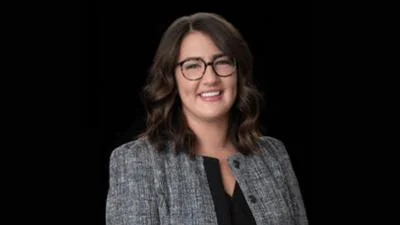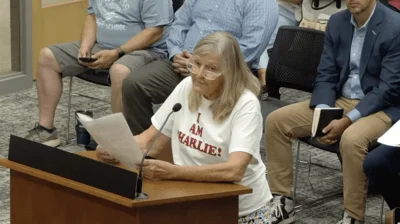The State of Illinois has committed to achieving a carbon-free footprint by 2050 through its recently passed Climate and Equitable Jobs Act. Plans to phase out coal-fired and natural gas power plants before 2045 means steps are needed now to move Illinois to a more sustainable future using renewable energy sources.
Geothermal energy, a natural source of renewable energy underground, is considered a consistent and efficient alternative for heating and cooling and provides a baseline source for the energy grid. Researchers and educators at University of Illinois Urbana-Champaign say that geothermal energy could play an important role for Illinois to reach its zero-carbon emissions goal.
“Illinois is a state with top potential gains from geothermal adoption,” says Andrew Stumpf, principal research scientist at Illinois State Geological Survey (ISGS), Prairie Research Institute at Illinois. “We can significantly reduce the amount of fossil fuels being burned for heating and cooling buildings by combining geothermal and solar energy systems to achieve a nearly net zero carbon footprint.”
Geothermal energy systems can be installed under a residential yard, football field, or buildings, so they have a small physical footprint compared to other renewable energy sources, Stumpf says. The boreholes that enable a building’s heating and cooling system to access geothermal energy fit into a wide range of subsurface locations.
Stumpf is co-founder of the campus’ Illinois Geothermal Coalition and serves as principal investigator for the Illinois Geothermal Coalition Technical and Outreach Program, a grant-funded project that began in 2021 to raise awareness of the potential for geothermal energy for institutional, commercial, and residential applications.
The Extension Collaboration Grant program fosters relationships between Extension and academic researchers at the Urbana-Champaign campus to address critical issues for Illinois communities in five key areas: food, economy, environment, community, and health. The program receives financial support from University of Illinois’ Office of the Provost Investment for Growth Program and Illinois Extension.
Goals for the two-year geothermal energy awareness program involve educational outreach to stakeholders, development of an interactive, data-driven dashboard for the geothermal industry and government organizations, and delivery of a decision support tool to assist decision-makers in planning and implementing geothermal energy technologies.
The applied energy research project draws from Stumpf’s extensive knowledge of geologic mapping and modeling and is complemented by the expertise of a carefully-cultivated project team: Tugce Baser, civil engineer and assistant professor in the Department of Civil and Environmental Engineering at Grainger College of Engineering; Stanley “Jay” Solomon, Extension natural resource, environment, and energy educator; Nancy Ouedraogo, Extension community and economic development specialist; and Melody Barrett, ISGS geospatial applications developer.
During its first year, the program delivered educational outreach to 239 community leaders, school administrators, and local officials. Four public webinars highlighted geothermal energy research and technology and showcased the efficiencies of successful models at community, campus, and federal levels.
“These outreach sessions introduced our statewide audience to what geothermal energy means, its associated efficiency and environmental benefits, how it is used, and why it is important for resiliency and energy independence,” says Nancy Ouedraogo.
In 2021, a geothermal system was installed at the Campus Instructional Facility. A preliminary temperature monitoring well and its resulting lab analysis reduced the project’s planned borefield size by 33%, which generated savings by cutting the payback timeframe from 40 to 28 years. Overall, the geothermal energy system reduces the building’s energy consumption by 58%, resulting in a projected annual savings of $45,000, or $1.35 million total savings over 30 years.
Baser says that electricity generation is the largest source of greenhouse gas emissions in the U.S., and according to the U.S. Environmental Protection Agency (EPA), ground source heat pumps – the type of geothermal technology most often used in residential applications – can reduce building energy consumption by up to 72% compared to traditional HVAC systems having natural gas furnaces and air conditioners.
The webinar series generated many areas of interest for further outreach efforts related to environmental impact and efficiencies of geothermal energy systems. Ouedraogo says 43% of participants indicated interest in underground thermal energy storage to support district energy systems.
Next steps for educational outreach will address common barriers faced in geothermal energy adoption, including guidance for communities, industry professionals, and residents in planning and funding geothermal energy installations.
As part of Extension’s ongoing Everyday Environment series, Solomon resumed the team’s educational outreach with a May 12 session on geothermal energy applications for heating and cooling. Additional sessions will be listed on Illinois Extension’s event calendar as they are scheduled.
Data on Illinois geology and associated geothermal potential collected over the last 50 years from borehole logs will form the foundation of the project’s planned interactive dashboard and decision-making tool. The data will be presented in ESRI ArcGIS® interactive maps, which will be made available to communities, industry professionals, and residents to help inform the opportunities for installing geothermal energy systems.
“By connecting with Urbana-Champaign campus geothermal energy projects and research, we have access to data that we can summarize and make available to both the general public and industry professionals,” says Solomon. “Geothermal energy should be part of individual and community resiliency plans, and this partnership gives Extension a real opportunity to build long-term, renewable energy educational programs.”
Original source can be found here.






 Alerts Sign-up
Alerts Sign-up